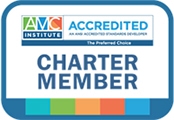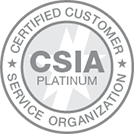MASAE’s 2017 Mid-Year Conference, entitled “Associations 2030,” inspired association professionals to examine not only the current best practices in association management, but also what best practices might exist in the future.
Throughout her closing keynote session, “5 Trends Your Association Shouldn’t Ignore,” Sheri Jacobs, FASAE, CAE, used examples from her personal experiences to effectively demonstrate the need for attendees to expand their association’s reach, align value with cost, and increase engagement.
Jacobs identified trends related to customer service, generations in the workforce and loyalty, as well as two trends I found particularly timely – cord-cutters and the sharing economy.
In recent years, the cord-cutter trend has revolutionized the delivery of television. This mindset demonstrates an increased demand for customization, as subscribers are leaving their flat-fee cable packages behind in favor of Internet-based services (e.g. Sling, Amazon Prime) that allow them to pay only for the channels or shows they watch.

One way to address this trend from an association standpoint is to consider membership categories that offer varying levels of access to benefits at different price points. This allows members to avoid paying a flat-fee for benefits they may not use, and provides them with a sense of personalization and flexibility.
The “sharing economy” is a trend of collaborative consumption, demonstrated in the rise in popularity of companies like Uber, Airbnb and Zipcar. These companies provide users the convenience of sharing a home or vehicle without the hassle or cost of owning it. Just like a car spends about 95% of its time parked, members may only use their benefits for a small percentage of the time.
Associations should look to increase engagement based on member needs and behaviors, and consider expanding options for shared benefits, e.g. offering a higher rate for shared conference registration.
What other ways do you see these trends playing a part in how associations function?




